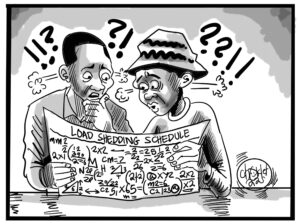In last week’s Monday opinion, I presented the topic on mining revenue sharing in terms of the current legal and policy provisions that back its formulation and implementation in Zambia. In today’s Monday opinion I take this discussion further by elaborating some of the technicalities of a Mining Revenue Sharing Mechanism (MRSM). I start my discussion with non-legal issues that surround its implementation, I will then proceed to answer the following questions:
(i) What revenue type to be shared?
(ii) How should the revenues be used?
(iii) How should the MRSM work?
1.0 Non-legal issues
It is important to be cognizant of the fact that several non-legal issues influence the implementation of an MRSM. These include:
(i) Political factors – it is important to note that political factors have a more significant impact on mining and mineral policy than most people realise. Sometimes, politicians can take advantage of a resource-rich area and use it to promote their interests.
(ii) National and Sub-National Government (SNG) conflict – National interests often conflict with sub-national ones. Often central governments opt to take control of revenue not only to ensure equitable distribution but also to maintain control over the use of government revenues.
(iii) Volatility in mineral commodity markets – The volatility in mineral commodity markets in terms of price has an impact on the MRSM. A fluctuation in mineral prices is felt at the local level in terms of an MRSM. Therefore, it is important to select fiscal instruments that provide some stable revenue inflow.
(iv) Volatility in production at a mine project level– this variable is equally important in the implementation of an MRSM. Volatile mineral production affects mineral revenue inflow both at a national and local level.
(v) Governance and accountability – The quality of leadership including accountability mechanisms at the local level is critical for a successful implementation of an MRSM. It is important that there is a well-articulated and enforced Public Financial Management (PFM) framework that makes the government system accountable and transparent in the distribution and utilization of the MRSM resources.
2.0 What revenue type to share?
The Government at both the local and central levels collects various types of revenues from mining companies. These would ideally include mineral royalties, export fees, license fees, dividends, and/or taxes on profits derived from resource extraction. Royalties are the easiest to calculate. It is for this reason why the 2008 Mines and Minerals Development Act made explicit reference to the MRSM being a Mineral Royalty Sharing Mechanism. Other revenue streams, especially profits taxes, require much more information to estimate, such as costs. This may translate into non-collection in certain years due to cost recovery or tax incentives. Linking subnational payments to these difficult-to-estimate revenue streams may generate confusion in years when production is high but payments are low. Therefore, it is important to centre the operating mechanics of the MRSM on royalties rather than profit-based taxes.
3.0 How should the collected revenues be used?
Usage of revenue from an MRSM must be prescribed. The practice in most countries that implement the mechanism is that there are set rules that guide the utilization of these funds. The revenues shared could be earmarked for specific spendings like education, health care, infrastructure, or other development expenses. In the case of mining communities, the idea should be to build resilience by investing in non-mineral assets. Additionally, the spending must aim at achieving the intended objectives of an MRSM.
4.0 How should the MRSM work?
The operating mechanics of the MRSM can be divided into three namely:
(i) Derivation-based – This is a system where funds are shared with the regions where the resources are produced.
(ii) Indicator-Based: This is a system where funds are shared based on a set of indicators irrespective of where the resource comes from.
(iii) Mixed system. A mixed system involves distributing a proportion of the revenues using derivation and the balance using an indicator-based formula.
This is it for this week, look out for next Monday’s opinion as we discuss other interesting issues.
About the Author
Webby Banda is a Senior Researcher (Extractives) at The Centre for Trade Policy and Development (CTPD) and a Lecturer with the University of Zambia, School of Mines




















One Response
Zambia should be thinking along the lines of the Alaska Permanent Fund.